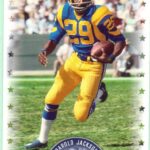Rafael Nadal’s Decade Begins With That Familiar Sinking Feeling
It seems barely possible that, in this very week just one year ago, the tennis world was predicting that Rafael Nadal could become only the third man in history to complete the tennis Grand Slam.
He’d just won his first Slam on the hard courts of Melbourne against one of the greatest hard-court players of all time, Roger Federer.
He’d beaten the king of grass, Federer again, in the previous Wimbledon final, in equally dramatic style.
With that Wimbledon triumph, Nadal had claimed the No. 1 ranking after more than three years at No. 2—behind the same man.
To cap it all, he’d won the Olympic gold medal.
Nadal had now got the better of Federer in the finals of three of the four Slams. With his win in Australia, he could probably win in the U.S. Open too. The French would be a shoo-in; it always was. And Wimbledon—well, he’d mastered the grass as well.
Little wonder, then, that when he won the Australian Open title, Nadal seemed set to dominate not just Federer but the whole of men’s tennis.
For a glorious window of four months in the spring of 2009, that looked like a sound prognosis. At worst, Nadal could beat Federer to a career Grand Slam, and at best, he could join the true elite of tennis with a calendar Grand Slam.
With his win on the hard courts of Indian Wells, Nadal moved more than 4,000 points clear of the field.
With the transition to clay, he won successive tournaments in Monte Carlo, Barcelona, and Rome.
In the process, he notched up wins against Andy Murray on hard and Novak Djokovic on clay.
As this correspondent wrote last March, before the Tour had even moved to clay, who could break Nadal’s vise-like grip on men’s tennis?
But beware the “Ides of March,” for there were hints that Nadal’s punishing style of play and all-out attack on the schedules were starting to weigh heavy on his knees.
Nadal had pulled out of Dubai in February to give those knees some attention, and the rumor mill ground away at the kernels of this ongoing story. But while his knees were permanently swathed in support bandages, Nadal’s movement around the courts never seemed compromised, and he constantly silenced the doubters.
If there were problems, he and his team would be in control of it. Surely he would not play in Rotterdam if it was serious, and anyway, he won at Indian Wells.
Come the clay season, the signs were even better. The knee supports were gone, his movement was superb, the titles rolled in. Until Madrid.
Nadal was uncharacteristically irritable from the moment he arrived at the Magic Box. He objected to the courts: They were too hard with too little cushioning grit. The altitude and the wind made the conditions difficult. There were too few practice courts.
He started to complain about the Tour’s schedule and the pressures on the players’ bodies. In short, it was not like Rafa.
Yet he progressed through the draw to a semifinal meeting with Djokovic without losing a set. Indeed, he had lost only one set since losing in the quarters in Miami: a total of 18 matches.
He lost his next set in the Madrid semi but won the no-holds-barred battle to set up a final against Federer.
Out of his 46 matches up to that point in 2009, Nadal had lost only three, all on hard courts. What’s more, his last meeting against Federer on clay had been in the French Open, and Nadal had put him to the sword with just four games to his name. The outcome in Madrid appeared to be a foregone conclusion.
But the tables were turned for the first time in almost two years. Federer ran Nadal ragged on the relatively fast clay and won the title in straight sets.
Many blamed Nadal’s draining semifinal against Djokovic. Many quoted Nadal’s complaints about the hard clay. But some again wondered about the knees. This time, they were right.
What no one realised, until after Nadal’s unexpected early exit from Roland Garros a few weeks later, was just how much pain his knees were causing.
Suddenly, Nadal’s fortunes—and with them all the hopes that had flowed from his Melbourne win—went into decline.
As well as failing to defend his French title, he had to pull out of Wimbledon.
Indeed, he pulled out of the Tour until the middle of August for extensive medical treatment to the tendinitis in both knees.
With those Slam disappointments came the loss of thousands of ranking points and a return to No. 2 inside a year.
When Nadal did return to the hard courts, it was without knee supports and without, it seemed, quite as much bulk. He embarked on a flat-out schedule and reached semis and finals along the way—even with an abdominal injury at the U.S. Open.
He seemed to have retooled his game: There was more variety in his serve, there were more approaches to the net, and he tried to hit flatter through the court. It all made sense. It was a strategy for shortening points and reducing the impact on his body. Until the Tour End Finals in London, things seemed to be working pretty well.
But when he lost every match in the Round Robin, it appeared that more had changed than just his tactics.
The slim-line Rafa looked a little light on confidence—and that was the biggest worry of all. Nadal, of all the players on the Tour, was the one who could demand a victory from his opponent by sheer strength of will. No longer, it seemed.
Buoyed by a share in Spain’s Davis Cup victory, Nadal announced that he intended to take just one day’s rest over Christmas in order to work on his form and fitness, and in Doha, it looked as though it had paid off. He lost, just, to an inspired Nikolay Davydenko in the final.
So coming into Melbourne, everyone relished the prospect of his quarterfinal encounter with Murray. It would be hard-fought, it could go to either man, it could be a long match. What no one anticipated was that Nadal would be brought low by his accursed knees once more.
If Nadal was dealt a deep thrust of the knife by his loss through enforced retirement, he was struck a yet more unkind cut by the rankings.
His only hope of retaining the No. 2 position was to win the title. His quarterfinal exit meant that he fell below Djokovic. If Murray goes on to reach the final, he too will overtake Nadal. It could be the first time in more than four-and-a-half years that Nadal is out of the top three.
Nadal would not be drawn on how serious his injury is, or how long he expects to be away from the Tour. He must hope it is not for long.
For that golden window of last spring will now cast a chilly draught as his points fall away like shrivelling cherry blossoms.














